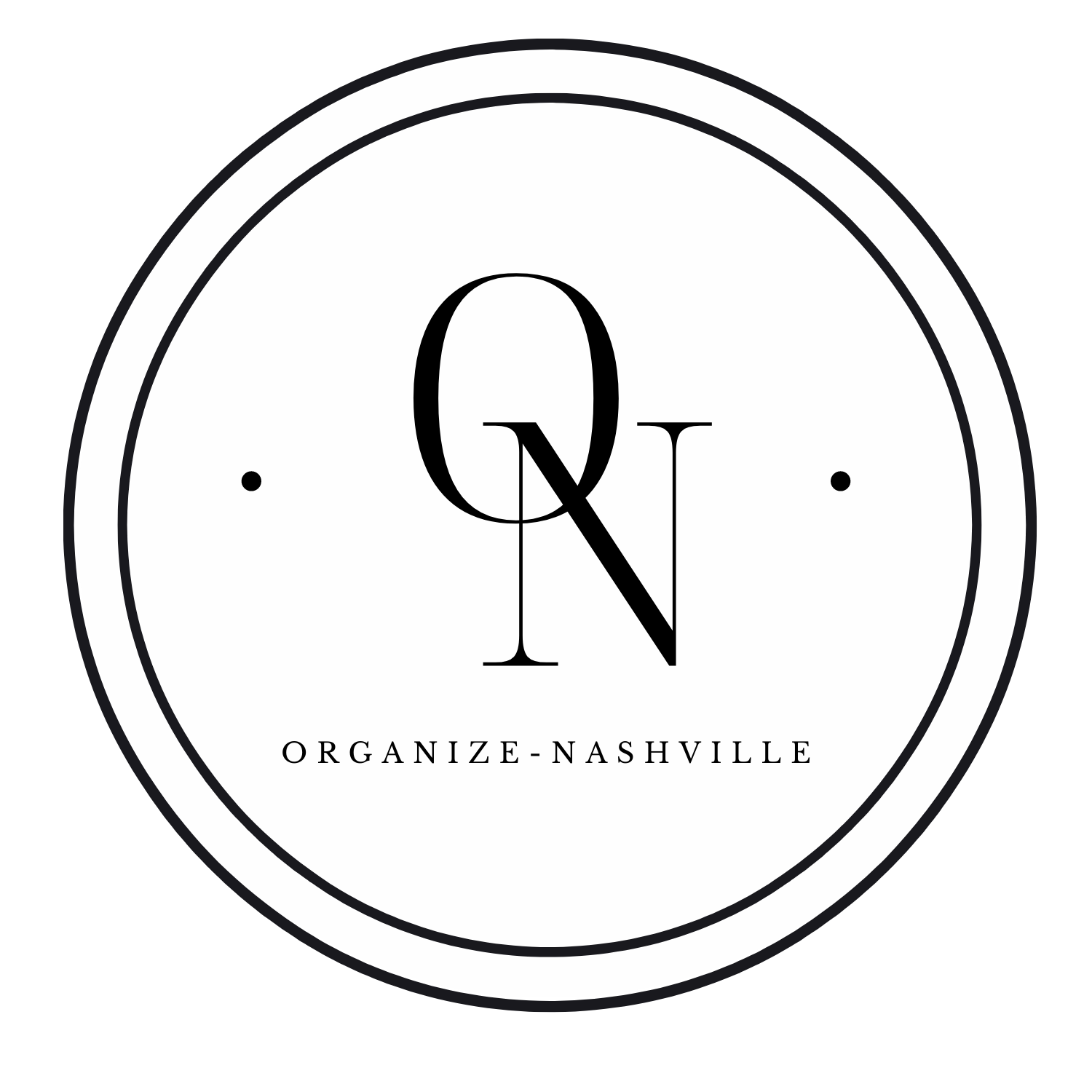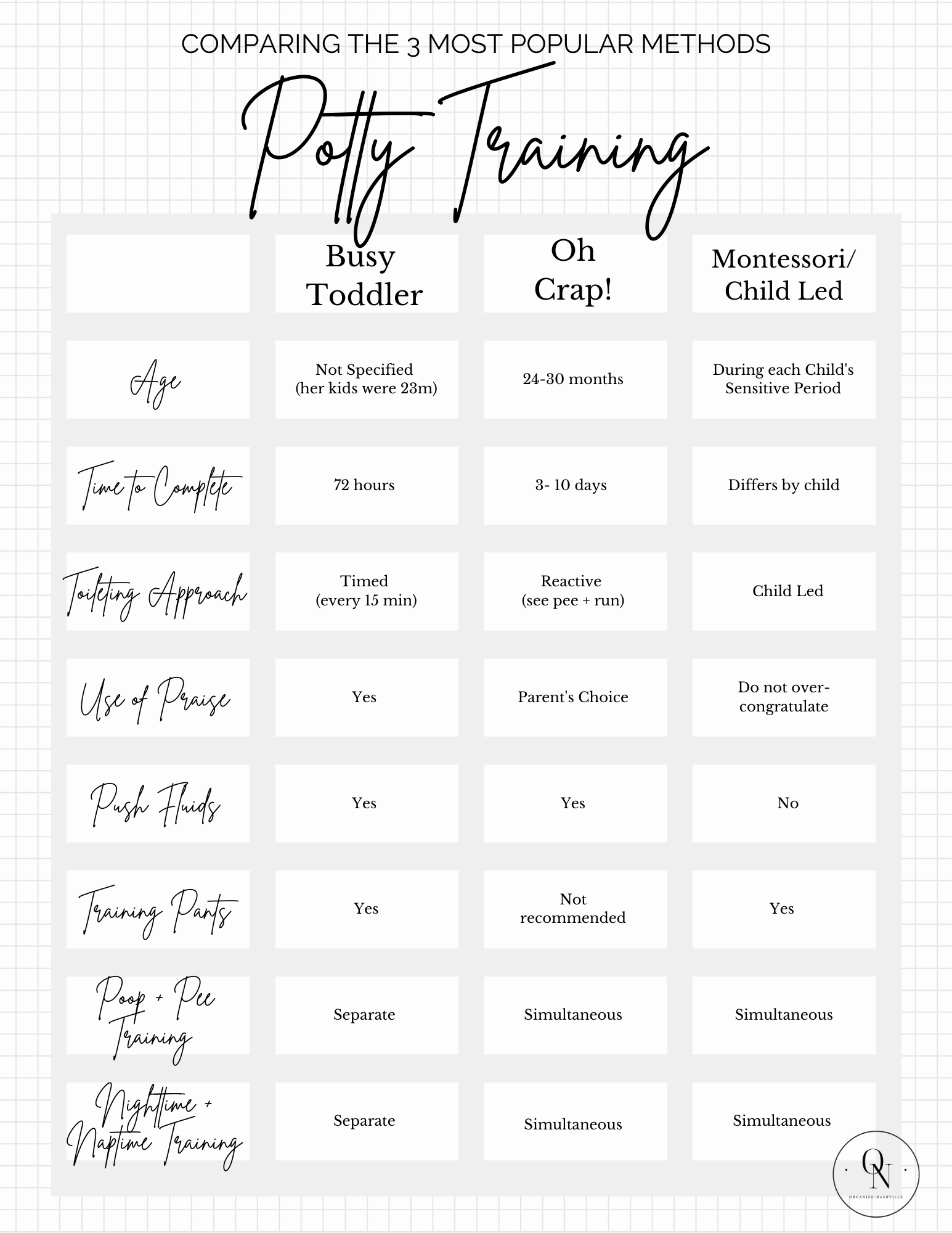Potty Training Simplified
I am who I am and so in my venture to find the BEST Potty Training method for our family, I organized all the things I found. You should know that I know nothing about potty training, so if you are looking for an expert, don’t look here. I just found that there is a lot of information out there, and one of the most popular books (Oh Crap! Guide to Potty Training) needed a cliff’s notes version. In my exploration to find the right fit for us, I took some notes and I thought it might be helpful to some of you as well. Plus I included some of the recommended potty training products from each of these methods.
I’ve summarized three of the most popular Potty Training approaches:
Oh Crap! Potty Training
Busy Toddler’s Potty Training Blog
The Montessori Method
I hope this is helpful for you in your potty training journey as well. If you are like me, and just want the down and dirty details, I’ve also included a quick potty training comparison of these three approaches:
Oh Crap! Potty Training Cliff’s Notes:
Citation: Glowacki, J. (2015). Oh Crap! Potty Training: Everything Modern Parents Need to Know to Do It Once and Do It Right. Gallery Books.
Theme: Keep it Casual. Its a marathon. Not a sprint. See Pee + Run!
Ideal Timeframe: 24 - 30 months
Step 1: Set a date at least two weeks away. Give yourself time to mentally prepare. Block off 7 days with no plans.
Step 2: Prep. One week prior, start discussing throwing diapers away. Don’t bring up the potty, bring out the potty, talk about potty training or bring out training pants.
Step 3: BLOCKS
“No matter where you are starting from, you need to think of the potty training process as a tower of blocks that you are building. If one block is not learned properly, the tower will be unstable and will tumble. Thinking in this way makes potty training so much more approachable.”
Block 1 = NAKED DAY (Days 1-3 depending on the child)
Goal: While naked, child can sit to peep and poop on the potty with or without prompting.
Toddler will be fully naked or naked from the waste down.
Start with the ceremonial throwing away of the diaper.
Push fluids within reason.
Don’t ask if they have to go.
Watch them like a hawk and run to the potty as soon as you see them start to pee.
When to move to BLOCK 2:
“As soon as you get a sense of hope or that a lightbulb has lit up in your child’s head, it’s time to move on to clothes. You don’t want to stay in Block One too long” (Glowacki, 75).
Block 2 = COMMANDO DAY (Days 2-6 from start)
Goal: Get your child into clothes.
THIS IS THE HARDEST PHASE!
Plan 1 small outing - go around the block or run to the store for one thing. Something QUICK!
Wait for them to pee/poop and then head out on your outing.
Your job is to start learning their signals and patterns. Be alert!
If you are not doing nighttime training at the same time, “you can still use diapers for naps and bedtime. Clearly state why the diaper is going on and when it will come off.” (I think we are going to take Susie Allison’s advice here and call them “bedtime pants” or “nap pants” to differentiate)
Block 3 = LEAVING THE HOUSE (Days 4-10 from start)
Goal: Gain confidence in leaving the house with clothes on (commando).
“Remember: you are not asking your child if he has to pee. You are prompting him to use the potty.”
Continue with what you learned from Block 2 but begin to explore public restrooms and go out for longer periods of time.
Bring a change of clothes.
Consider bringing your potty chair along with you.
Continue to prompt and tell the toddler to go to the restroom. Phrases to use:
“Sure, we we can leave for our walk as soon as you pee” (87)
“Yes, you can watch Elmo. Sit and pee first” (87)
“I see you have to ppe. There’s your potty” (89)
Normalize it as part of the routine: “Put your fork on the table. Put your cup on the table. Go sit and pee. Thank you. You are such a big help” (88)
Do not over prompt or hover.
A good sign that you are doing it right:
“When you are potty training, there comes a time when you actually have to hand control over to your child. Usually, this is within the first week. A really, really good sing that your child wants you out of her business is when she ‘had it’ and all of a sudden resists or starts to have tons of accidents… give her room to make the right choice for herself” (Glowacki, 88)
Nighttime and Naptime Training:
She suggests that the best way to potty train is to do this all together. In short, she says it requires two things:
Controlling fluids 2-3 hours before bedtime.
Waking the child up twice a night.
Although she highly recommends simultaneous daytime and sleep time training, she does a great job of articulating understanding for those of us who may not find this approach as favorable.
Other takeaways:
Pull-ups are diapers (Glowacki, 78)
“Your child should go commando for about a month”(Glowacki, 76). Basically, make success easy.
Training pants are useful WHEN it’s time to move to underpants. Hide them until it's that time. (BLOCKS 4, 5, 6)
Play it cool and keep it casual. Attitude is everything.
Commit fully to whichever plan you pick. Don’t waver.
My overall impression: This book has a lot of great content. I think the wordiness and attempt to address every situation could be overwhelming to some. It is a true reference book, meaning now that I have the gist of what to do, I will go back and reference her book if I have questions. I recommend only reading the parts that are relevant to you - or just read this blog post hah! and refer back for specifics as you need to.
Susie Allison of Busy Toddler’s Potty Training Blog:
Theme: Power Through.
Ideal Timeframe: She trained each of her 3 kids at 23 months.
Prep:
Buy a potty chair early and allow the kid to get used to it before you start official training day.
Set a date and stick to it. Susie says, “Don’t do it on a whim.”
The night before set the stage and share that tomorrow there are no more diapers.
Day 1: EVERY 15 MINUTES
Take the child to the potty every 15 minutes. If they pee, reset the timer. If they don’t set every 5 until they go.
Push fluids.
When they go, celebrate like crazy and offer a reward of some time (Susie suggests a “small candy prize”)
Use diapers at naptime but don’t call them that. She suggests “naptime potty pants.”
If they miss the potty, just simply state: “Uh oh. We went pee pee on the floor. Pee Pee goes in the potty” (cite)
Do NOT leave the house. Stick to them like glue. Watch them like a hawk all day.
Day 2: EVERY 20 MINUTES
Same as Day 1 just every 20 minutes.
Day 3: EXTENDING TIME
Back off on fluids and start extending their windows in 15 minute increments (30, 45, 60).
Consider venturing to the backyard but make sure they pee before heading out.
Day 3 and beyond:
You made it!
Gradually increase outings as you see success.
Keep an extra change of clothes in the car, be aware of where bathrooms are.
Other takeaways:
Potty training and poop training are different.
She suggests that when to put on pants and underwear is on kid to kid basis.
Montessori Approach
This is just what I’ve gleaned from our time at Montessori school. It may be different than your Montessori approach. Again, I am not an expert so take this with a grain of salt.
Theme: Follow your child
Ideal Timeframe: Each Child’s own Sensitive Period
Prep: Start talking about body parts and the potty from a very early age.
Start: As the child starts to show interest, you can introduce the potty.
Practice pushing down pants, sitting on the potty and getting dressed.
The child can wear pull ups or training pants and practice these skills.
Start incorporating the toilet into their normal routine.
If they don’t make it in time, don’t make a big deal about it. Just identify the issue and allow them to help get undressed and redressed in dry clothes.
Other takeaways:
Do not over praise
Prompt don’t ask. For example, “Its time to use the potty”
When I started writing this, I still did not know which approach I would use. But by the time I finished, it was clear which one was best for us. There are things I like in each approach. One thing was common in all three: Don’t ask your child if they have to go to the bathroom! Prompt and tell. I also liked how each approach gave clear markers for when your child is ready for that approach. By the end, I also felt like if you fully commit to any of the options you will see success. Consistency is key.
I’d love to hear what you are doing for potty learning/ training or which approach worked best for you! Share below in the comments.
xo
Caroline






